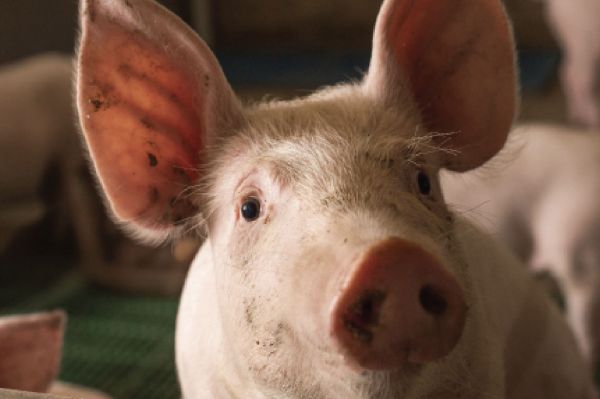Irish pig sector - a producer's assessment

Pat provides an overall assessment: “Pigs were going through a good period during the summer. From quarter one into quarter two prices were pretty good. Coming into quarter three, however, prices started to come down. The market has become a bit more saturated and that’s why the price has come down across Europe.”
But, pig price is just one aspect of the overall picture, according to Pat. “It’s the costs that have crept up since 2020 that is the biggest challenge particularly labour costs, repairs and maintenance. Refurbishment is a big issue and getting work done is a big challenge. Haulage costs for manure and feed have all increased since 2021,” explains Pat.
Tighter margins
Compared to 10 years ago, Pat says, overall labour requirements in piggeries are much higher today. “The industry overall – the same as many other sectors – is increasingly dependent on foreign labour from within and from outside the EU. We have had to gain new expertise in a range of areas in recent years. Producers have become trainers as well as managers and that’s a challenge. Pig producers have also become environmental experts because of the intense regulatory system we operate under.
“Most producers would be making a profit at the moment. Margin depends on managing at a very high level of efficiency and performance. The better your performance, the better your margin is. If you have an efficient operation and keep it up to date, you’ll have the advantage in getting that extra performance.”
Prices and producers
At time of print, according to Pat, finished pigs were making €2.12/kg to €2.14/kg. And, while processors were suggesting that the market had stabilised, there is no long-term guarantee that the situation will continue. “If we can keep prices where they are, or higher, that’s most important. If prices start to go lower, then we’re into a thin margin zone, because the overheads have increased dramatically,” he says.
Akin to what is happening in other countries, the number of pig producers in Ireland is contracting, says Pat.
“The industry is consolidating with those who are exiting the business doing so for a variety of reasons. The industry is consolidating into fewer producers and that is no different to what is happening in the UK and in Northern Ireland.”
EU production trends
In Spain, for example, environmental issues and associated concerns have led to the 'falling away' of pig expansion, according to Pat. “Environmental issues have become a major challenge for pig producers, resulting in some contraction in pig production. The Spanish Government is trying to get more produce into China and far-eastern markets.” The German pig sector, Pat says, is also contracting, and the country will be a net importer of pork within two years. While in Holland, he adds, there’s an exit scheme for those producers in the pig, poultry and laying hens sectors, and the Danes have also reduced production.
Other countries have seen some level of expasion, however. “Poland is expanding production, as is Hungary. The EU has funded farmers in those countries bordering Ukraine and grain is cheaper than over here, so there has been an opportunity to expand," explains Pat.
“While grain prices are relatively low – and that’s bad for tillage farmers – soya was very expensive at anything from €450-€550 per tonne, so that kept feed costs high. We need the Irish grain industry to have a local dependable grain supply – that’s important. We sell pigs every week, but they [farmers] only sell their grain once a year. They are dependent on a good grain price, and we are dependent on them for a good quality, native grain supply because you never know the dependability of imports.”
Promoting Irish pigmeat
The Cork pig producer praises Bord Bia for its work in promoting Irish pigmeat: “There’s always new market opportunities as well as building on existing market outlets. Welfare standards are rising all the time, so some of the main retailers around Europe are looking to source product from countries with higher pig welfare standards. We’ll be able to capitalise on that and hopefully grow market share. In fairness, Bord Bia has been way ahead of other countries in promoting Irish pigmeat as having high production standards. We have to compliment Bord Bia on that strategy.”
Pat recognises the efforts made to allow Irish consumers to recognise native pigmeat: “The DNA provenance is on the packaging. You will also see the Bord Bia quality logo on a lot of Irish pigmeat at this stage. The big retailers are fairly supportive, though maybe on pricing it might be different. Have they given enough back to the primary producer and to the main processor? We don’t have that information, but we would hope that they are doing a good enough job and are being fair. You’ll always have some consumers who will go for the cheaper non-Irish product. That often happens as well.”
Global pig health
Pig health has greatly influenced global pig production in recent hears. Pat outlines the current health status of pig production across the world: “Global pig health challenges have been a major factor in influencing prices and volumes in recent years. African swine fever (ASF) is the biggest thing in Europe today and it cost the German pig industry a lot of money when they were locked down. They lost their international markets a few years ago and that was a big issue for them. ASF is still a big issue across Europe. It’s no different than how bluetongue disease is affecting the UK livestock sector. Our health status is paramount and maintaining biosecurity is essential for our food trade with countries across the world.”




